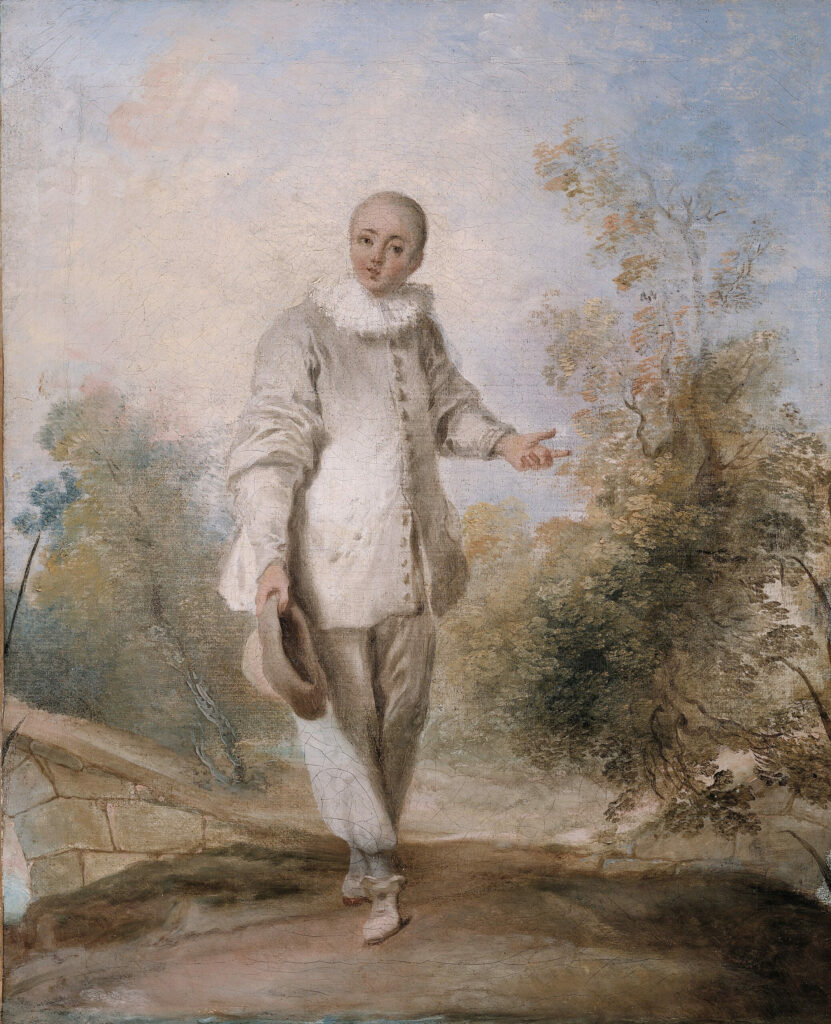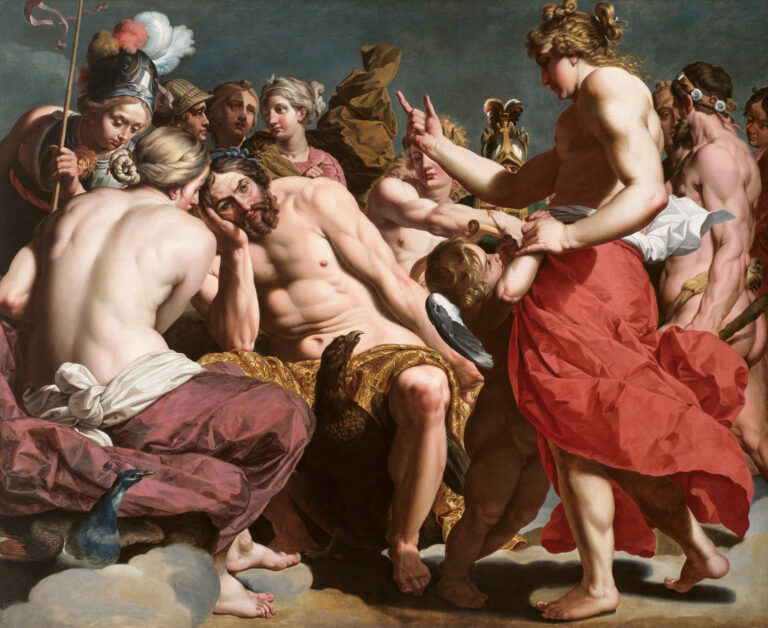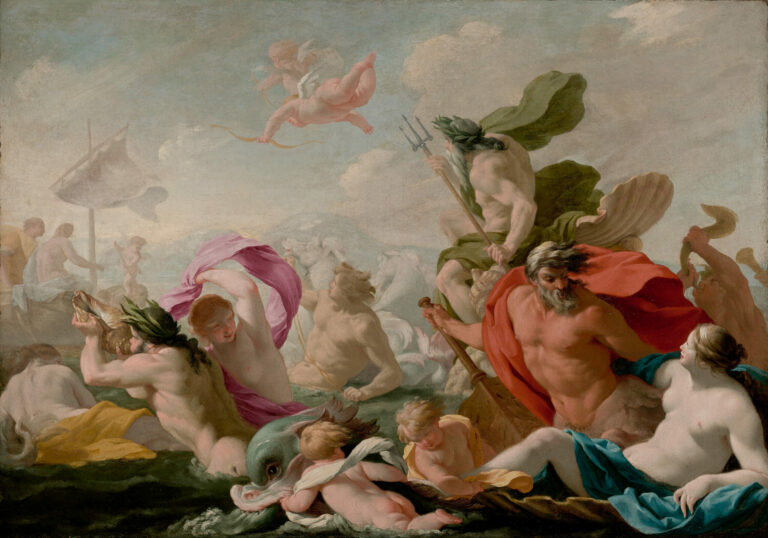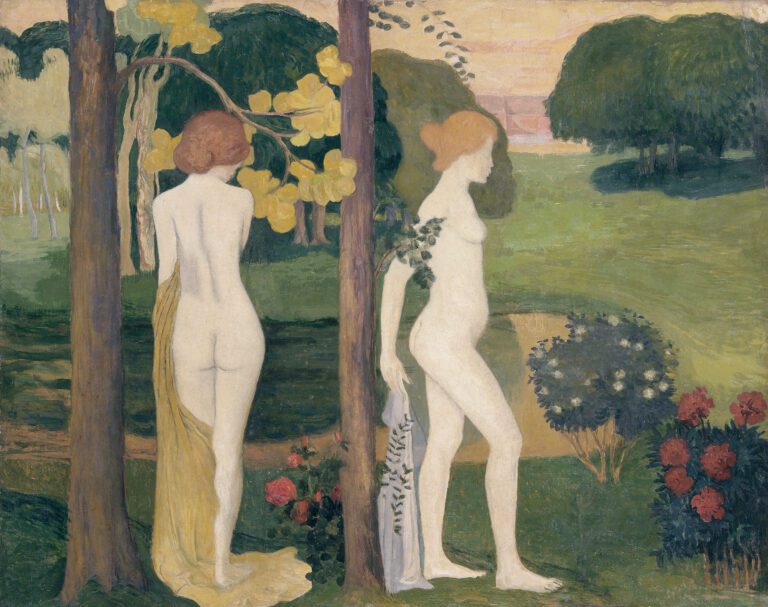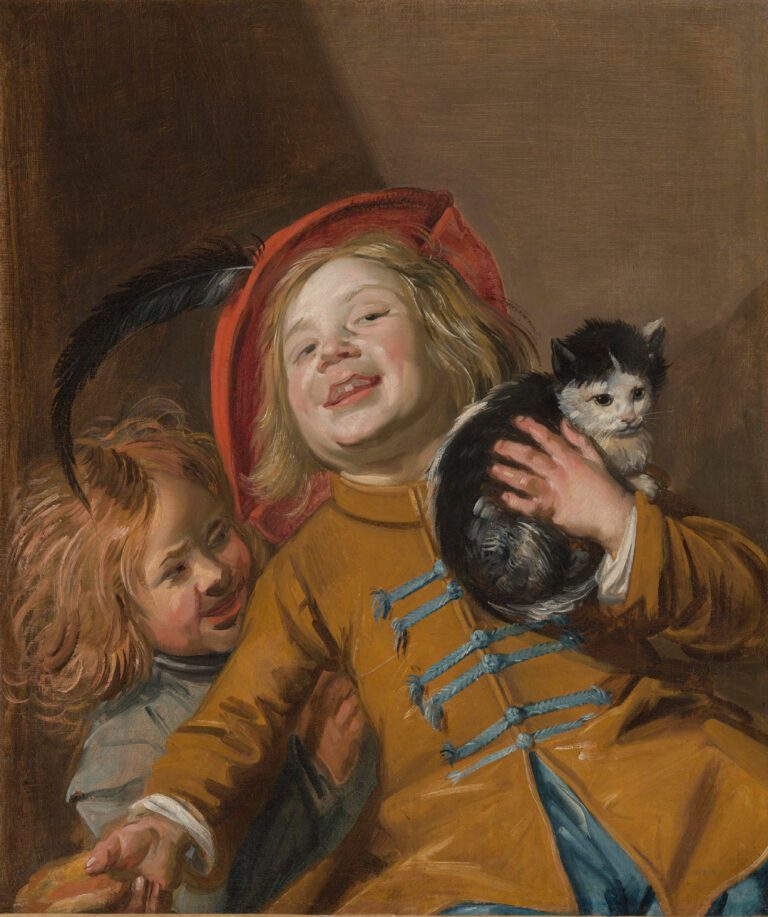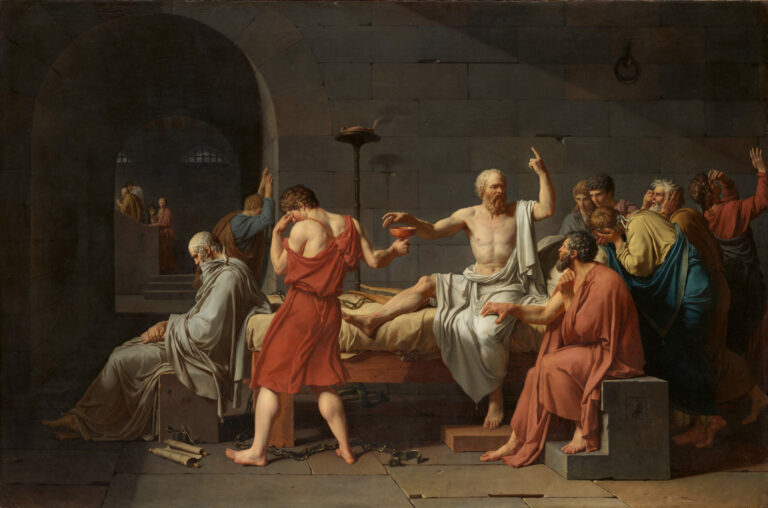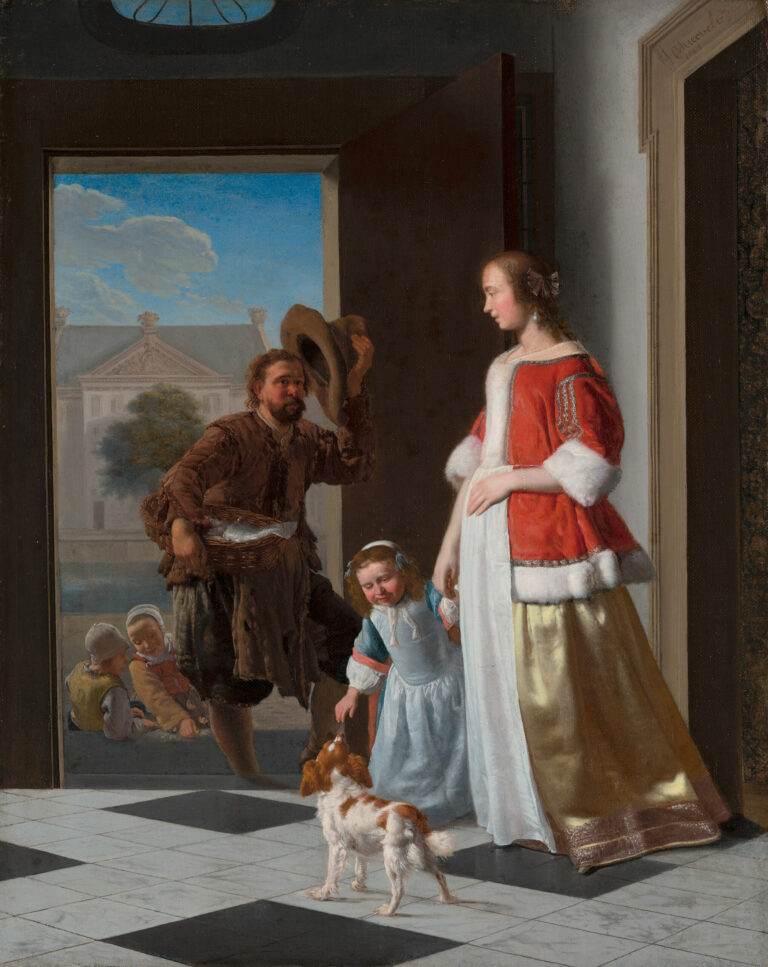This delicate work presents a solitary Pierrot within an autumnal landscape of soft hues. The figure, dressed in the traditional white costume of commedia dell’arte, stands elegantly against a background of foliage in ochre and tender green tones.
His pose is imbued with melancholic grace—the left arm slightly extended in a gesture of invitation, the other delicately holding a hat. The pale face and youthful physiognomy of the character contrast with the rich vegetation surrounding him, creating an atmosphere of poetic reverie.
The painterly touch is light and vaporous, revealing a technical mastery characteristic of the 18th-century French school. The artist has captured the essence of Pierrot—this emblematic figure both comic and melancholic—in a moment of theatrical pause. The diffuse luminosity and harmony of pastel colors create an ethereal, almost unreal ambiance that perfectly corresponds to the world of the fêtes galantes so prized during this period.
Further Information
- Pierrot Standing in a Landscape, French School, 18th century
- 40.8 × 32.5 cm
- Paris Musées, Musée Cognacq-Jay, le goût du XVIIIe, on display
- https://www.parismuseescollections.paris.fr/fr/musee-cognacq-jay/oeuvres/pierrot-debout-dans-un-paysage
This work is a copy of the central panel of a decorative ensemble created by Nicolas Lancret (1690-1743), a French painter renowned for his scenes of fêtes galantes. Lancret, a contemporary and rival of Antoine Watteau, forged a considerable reputation among the Parisian aristocracy.
For this Pierrot, he drew inspiration from Watteau’s famous “Gilles” and other figures, while developing his own sensibility. The original painting was part of a decorative ensemble commissioned in 1728 by Jean de Boullongne for his private mansion on Place Vendôme, thus testifying to the French elite’s fascination with these stylized theatrical representations, halfway between reality and fantasy.RéessayerClaude peut faire des erreurs. Assurez-vous de vérifier ses réponses.

